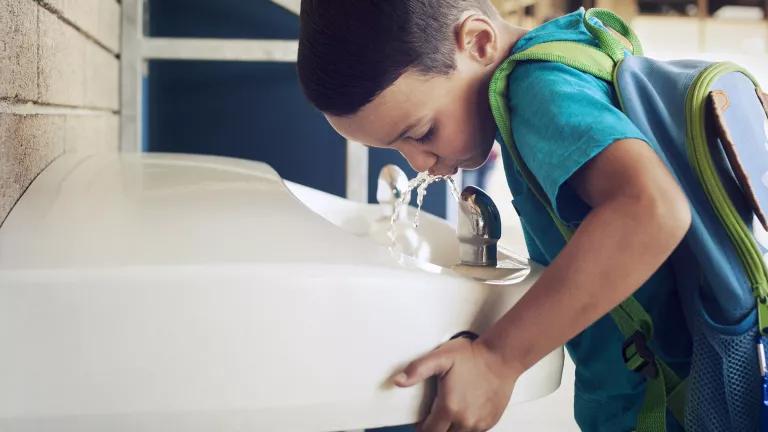
California Governor Gavin Newsom’s recent veto of AB 249 means the state will not take action to protect kids from lead in their drinking water while attending school. Timing of veto is troubling given alarming data that one in four of the state’s childcare centers have high levels of lead in their drinking water.
For years, California has struggled to develop a comprehensive approach to address lead in drinking water, including at schools and childcare centers. The limited steps the state has taken to identify lead in drinking at childcare centers has revealed alarming levels of lead.
Yet, earlier this month, California Governor Gavin Newsom vetoed AB 249, which would have required the testing of drinking water for lead in all schools and childcare centers built before a certain date. The bill was introduced by Assembly Member Holden and co-sponsored by Environmental Working Group and Children Now, who all worked tirelessly to try to protect some of California’s smallest residents.
According to the CDC, lead can damage the brain and nervous system, cause learning and behavior problems, and can slow growth and development of children. Pediatricians and scientists agree that there is NO safe level of lead for children.
AB 249 included notification and remediation requirements if lead levels tested above five parts per billion, and required the State Water Board to collect, track, and make public the compliance data. The bill also had an enforcement provision, because what good is any law if it’s not enforceable?
In contrast to this recent veto, Michigan just enacted the most protective law in the nation, one that follows the current best practice, the “Filter First” approach. In this method, schools and childcares install filters first and THEN test the water to ensure the filters are providing water that is safe. We hope that the AB 249 veto leaves the door open for an even more health-protective law like the one passed in Michigan, but the administration’s veto language and public statements on the bill don’t inspire confidence that a meaningful plan forward for California is in the works.
The Governor cited costs as the reason for his veto, saying the bill lacks “key provisions for efficiently administering the funding and is inadequate to cover the full cost of implementation.” In addition, he noted that the bill creates ongoing, “General Fund costs that could range into the hundreds of millions of dollars.”
The cost argument is a weak one. A report released by NRDC, based on the American Heart Association’s data, notes that removing lead pipes has an enormous benefit. A June 2023 formal scientific statement from the American Heart Association highlighted the considerable evidence that exposure to lead is linked to many cardiovascular diseases, including stroke and heart attack. The NRDC report concluded that over the next 35 years, removing lead service lines would result in significant cost savings—$786 billion—from avoided health impacts nationwide.
The Filter First approach is more cost effective, more protective for children, and the expenses are more predictable than the usual test and remediate program. This is because filters reliably provide clean drinking water. When testing is used to try to identify lead in plumbing, it requires multiple tests and often results in misdiagnosing the problem; facilities often replace faucets or pipes only to retest and find there is still a lead problem because these plumbing parts can still contain lead.
In his veto statement, the Governor didn't point to any other plan to protect school-aged kids from lead in drinking water. The Department of Finance’s bill analysis states that administration was “open to considering…a one-time incentive program”—a much weaker version of the vetoed bill. Incentive programs, AKA voluntary testing programs, tend to have very low buy-in, making them essentially ineffective for protecting children.
As moms with young children, it is mind boggling that California doesn't have a more protective and proactive approach to addressing lead in school drinking water—a known neurotoxin. Testing in California’s childcare centers shows that lead in drinking water is a significant problem. An analysis by Environmental Working Group found that one in four California child care centers have alarming levels of lead in drinking water and it may have impacted toddlers and babies for decades. It is a problem that the legislature recognizes and has shown a desire to fix; AB 249 passed with sweeping support, only to be halted by the Governor.
While this veto sets the state back, we hope that the legislature and Governor will work with the environmental community, public health professionals, and parents to pass a bill with meaningful safeguards for kids in California’s schools and childcare centers. Without action soon, California’s children and their families will bear the health and economic costs of lead contamination, and that is an unfair burden.





